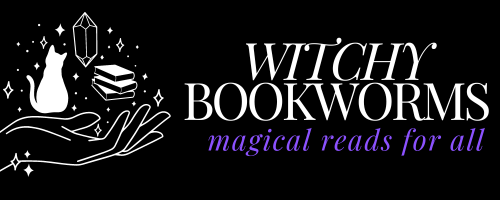My first taste of vampires were old black and white movies like Nosferatu (some seriously ugly vamps) and Bella Lugosi’s “Dracula” (1931) (not so ugly vampire, but creepy all the same). For some of us, it was our first introduction to bloodsuckers, but these creatures of the night began in ancient folklore as twisted, terrifying beings. The idea of blood-drinking or life-draining creatures can be traced to early civilizations. Ancient Mesopotamian and Greek legends spoke of demonic beings that feasted on human life forces. For example, the “Lamia,” who I wrote as one of the villains in my book Burning Djinn of Fire, was described in Greek mythology as a blood-drinking child-eating monster, and in Slavic myths, the “Upiórs,” reanimated corpses of the unclean, would come back after death and sucked blood from the living. Eeek, am I right?
But a few centuries later, and these horrific creatures have somehow become complex antiheroes and even unlikely heroes. So how did they go from horror icons to misunderstood immortals with a fan club?
Bram Stoker’s Dracula (1897), *** the book that solidified the myth of modern vampires, shows the undead creatures as something more than a mindless, soulless character. Dangerously alluring with a heavy dash of charisma, Vlad Dracula’s obsession with Mina Harker, her purity, her morality, and her likeness to that of his dead wife (the love of his life) fuels his desire to possess her body and soul. He twists her thoughts and drinks her blood, forging mental and physical bonds that make it hard for Mina to resist him. But this wasn’t a romance, and Dracula was anything but the hero. In the end, (spoiler alert!) the vampire is killed, and Mina is saved from being turned into his immortal bride.
*** There are a few other works that romanticized vampires before Bram Stoker’s Dracula, but Dracula is the most well-known, which makes it the most influential. That’s not to say these other works didn’t inspire Stoker.
So when did they become heroes? There is the Marvel superhero Blade, who was first introduced in 1973, though he was only half-vampire, he was a day-walking antihero who killed other vampires for sport. Even more so, Ann Rice’s Interview With A Vampire (1976) influenced a major shift in the way we saw the undead. While neither Louis nor Lestat were heroes (or even anti-heroes), it was one of the first books in popular fiction to show vampires as attractive, sympathetic creatures with complex lives and emotions, with the ability to love and be loved in return. The focus was on the inner struggle of the vampire. A monster who was once a human being, now being forced to prey on humans for survival. Louis was described as tormented and beautiful, which made him extremely sympathetic and sexy as hell. LOL. And Lestat, he was commanding and beautiful (not as sympathetic, but also extremely sexy).
Forever Knight, a TV series that ran from 1992-1996, (and based on a TV movie of the same name from 1989) featured an 800 year old vampire who worked as a homicide detective who is trying to redeem himself and regain his humanity (hero-antihero) was the first time I saw a vampire who was trying to “do good” for humanity. Laurell K Hamilton’s Guilty Pleasures (1993) started the “Anita Blake, Vampire Hunter” series, and vampires became even more complicated and, often out of necessity or love, the antihero. *** The Buffy-verse, (Buffy the Vampire Slayer TV series 1997-2003) gave birth to a whole generation of swoon, and the biggest fight in fandom….Bangel or Spuffy? I’m a Spuffy, for what it’s worth (minus the one episode that shall not be named or watched ever again).
***Yes, “Buffy the Vampire Slayer” movie came out in 1992, and while I love Rutger Hauer, I don’t think any of the vampires in that movie were more than cookie-cutter villains.
These books, movies, and TV shows have paved the way for vampires to become main characters with rich lives and histories, whether villains, antiheroes, or heroes, and as a reader and author, I am grateful beyond belief for the evolution. Ultimately, whether you love or hate vampires, there is no denying the allure of the dark side (Just ask Vader!)
Some of my favorite Vampire Books:
- Interview with the Vampire by Anne Rice (1976)
- Guilty Pleasures by Laurell K Hamilton (1993)
- Sunglasses After Dark by Nancy A. Collins (1995)
- Dead Until Dark by Charlaine Harris (2001)
- Let the Right One In by John Ajvide Lindqvist (2004)
- I’m The Vampire, That’s Why by Michele Bardsley (2006)
- Halfway to the Grave by Jeaniene Frost (2009)
- Night Myst by Yasmine Galenorn (2010)
- Fashionably Dead by Robyn Peterman (2014)
Some of My Favorite Vampire Movies:
- The Lost Boys (1987)
- Bram Stoker’s Dracula (1992)
- Interview With The Vampire (1994)
- Blade (1998)
- Dracula 2000 (2000) (Come on! Gerard Butler. Yes, please.)
- Queen of the Damned (2002)
- Underworld (2003)
- Van Helsing (2004)
- Let the Right One In (2008)
- Twilight (2008)
- Daybreakers (2009)
- What We Do in the Shadows (2014)
- Dracula Untold (2014)
And My Favorite Vampire TV Shows:
- Forever Knight (1992–1996)
- Buffy the Vampire Slayer (1997–2003)
- Angel (1999–2004)
- Moonlight (2007–2008) (We were robbed when this wasn’t renewed!)
- True Blood (2008–2014)
- The Vampire Diaries (2009–2017)
- Being Human (UK: 2008–2013, US: 2011–2014)
- The Originals (2013–2018)
- Midnight, Texas (2017–2018)
- Legacies (2018–2022)
- A Discovery of Witches (2018-2022)
- What We Do in the Shadows (2019–present)
- Interview With The Vampire (2022-present)
Who are your favorite vampires? Let me know in the comments!

